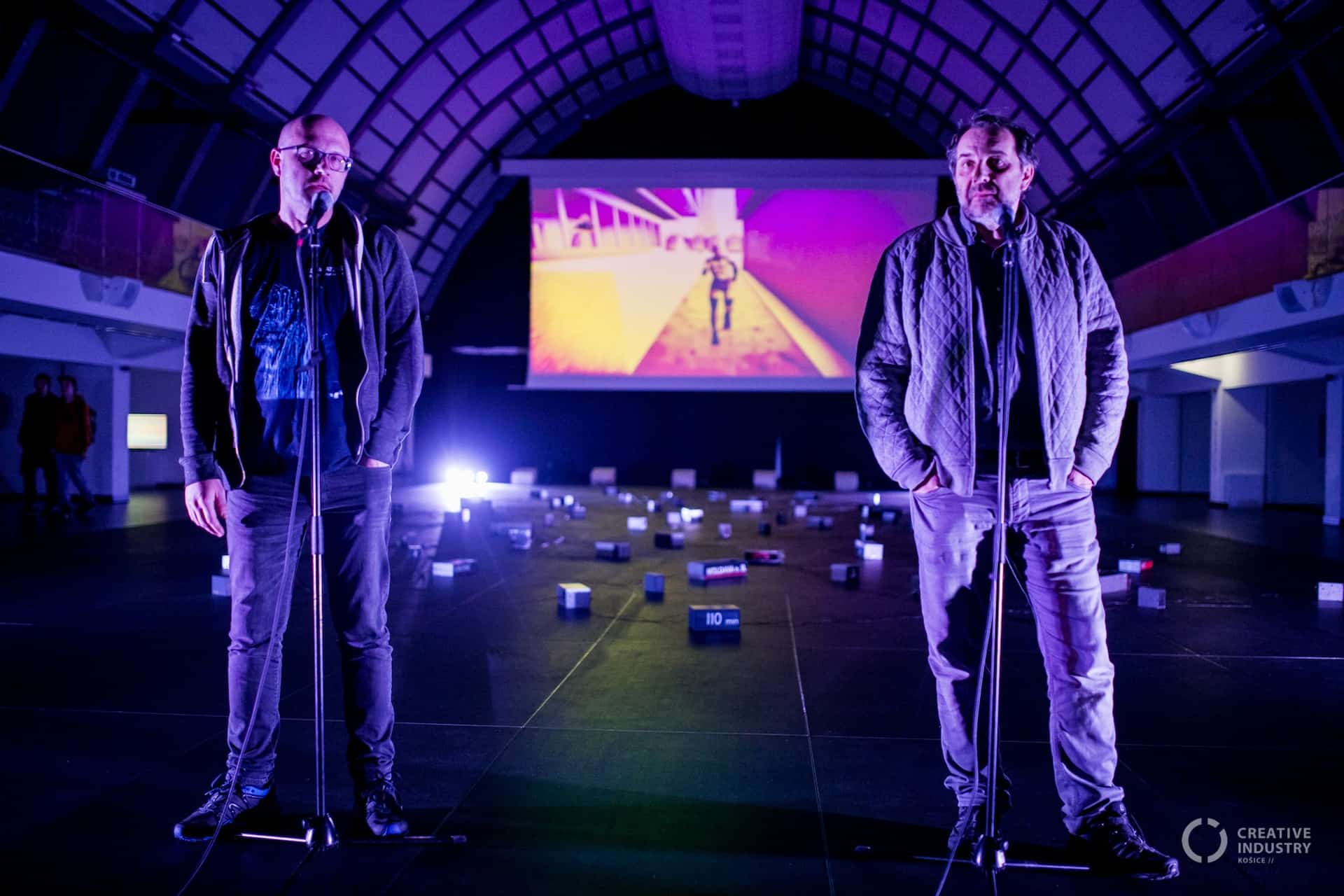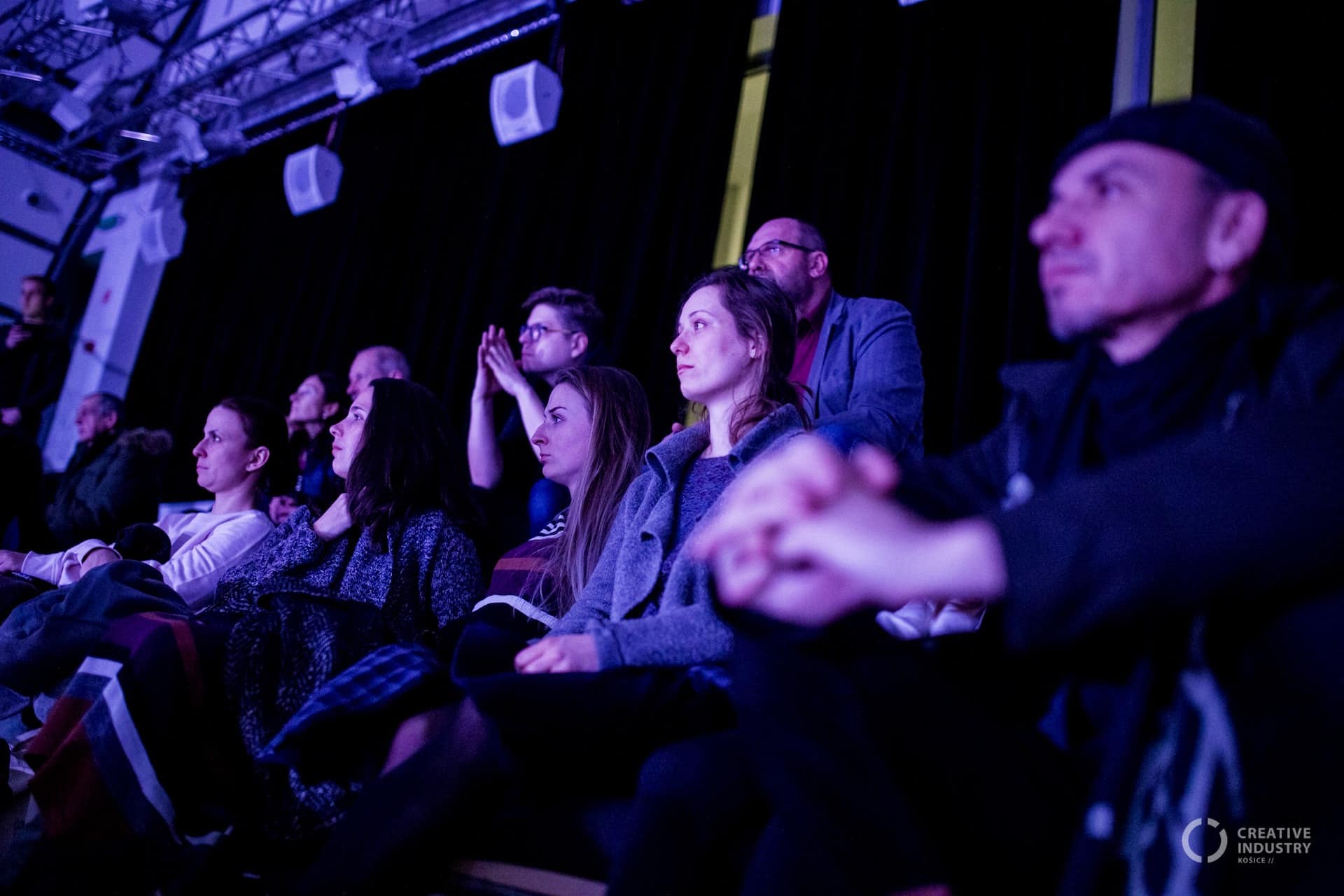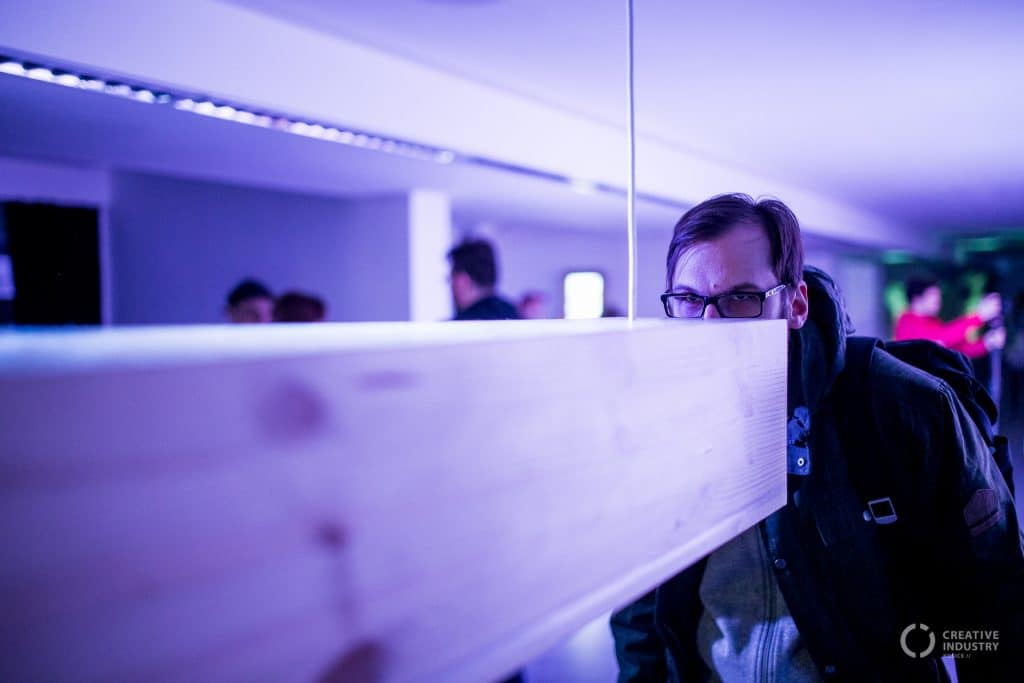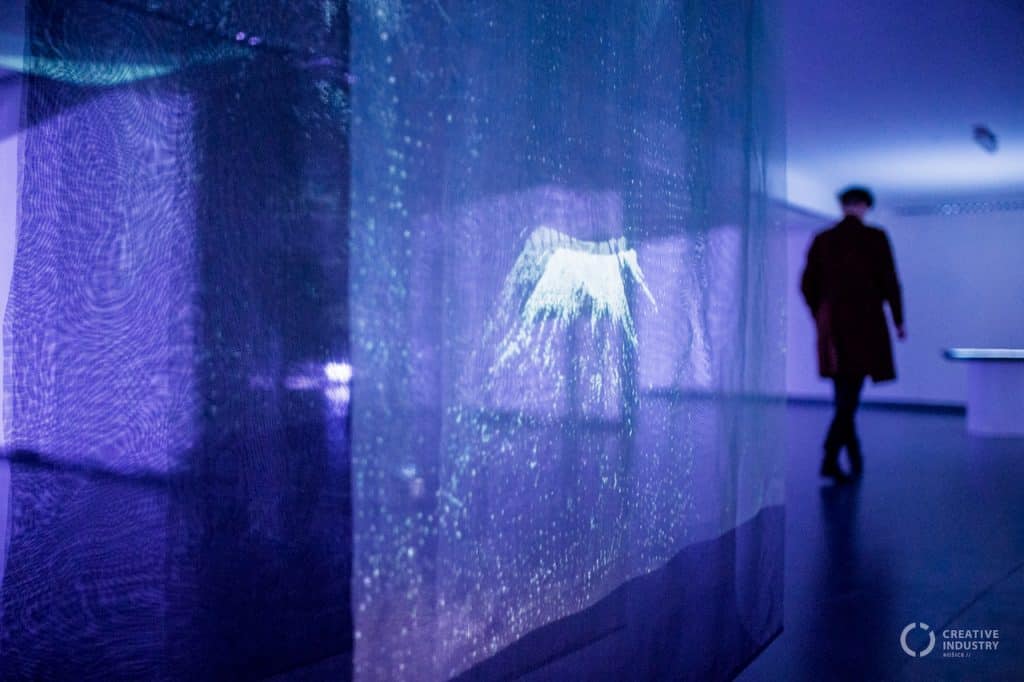The exhibition No power No Art in Kunsthalle reflects the energy’s motive from many different aspects while focusing on relatively young artists working with new technologies. In the former indoor swimming pool building, you can walk around the art pieces that illustrate the movement or bustle and the artworks that require interaction. The exhibition also reflects another word, “energy”. It shows us how important it is to put more effort into the area of artistic development.
This project is the third sequel of Creative Playgrounds – a series of events presenting different media art forms. It was firstly created in 2017. While the first edition focused on the local artists, it was the foreign ones in the second edition. Currently, Richard Kitta and Michal Murin, the authors of the concept, decided to focus on students, graduates, and teachers from the chosen Slovak, Czech and Polish universities.
The installation of Dominika Kolačkovská, one of the central art pieces of the exhibition, can attract your attention thanks to its size and specific sound. It is created of many different interconnected station information boards, which are spread over the whole covered area of the pool. Even though the noise from quickly changing inscriptions of stops might seem disturbing at first, these vibrations eventually merge into one monotonous unit. They create the continual sound heard from every part of the exhibition.
In this atmosphere with a hypnotic tinge, you can also see the artwork by Martin Bizík, which is based on the echo. His wooden prism hanging from the wall is set in a way that if visitors say something loudly to the microphone, the art will “shout” back at them.
Even though one of the exhibition’s goals is to “reflect the popular topics from the point of the current generation,” only a few of the artworks do so transparently and clearly. The exception is the art piece of Martin Kolčák, who deals with the question of modern technology’s impact on society. In his video, he switches the animations of the globe surrounded by satellites with the visualizations referring to the omnipresence of cameras.
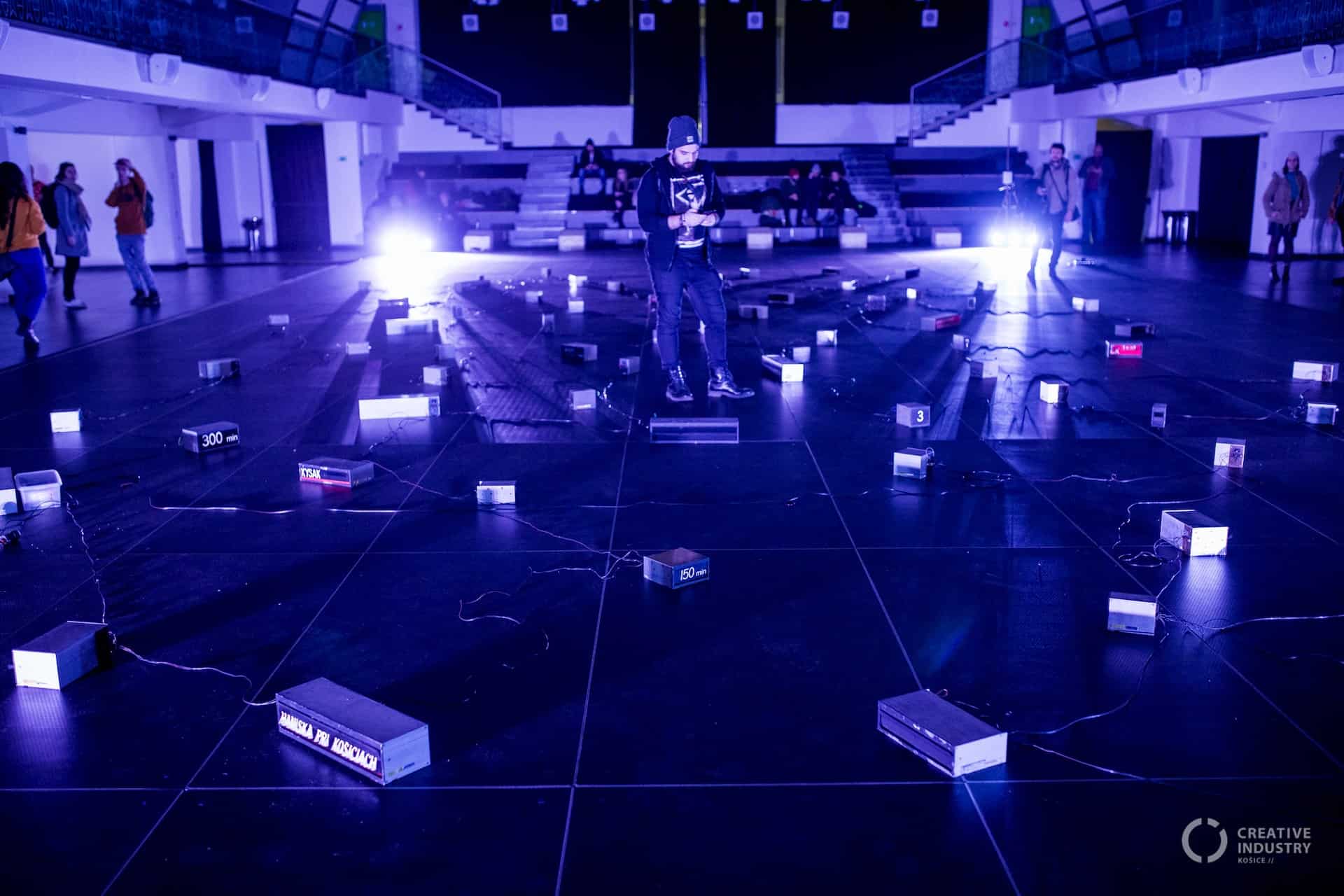
Very interesting is also the network installation of Veronika Šmírová. When visitors come into its core, they can think about how our current overtechnized world is not neutral at all. It is the opposite, and even data are subject to the network of codes, characters, and formulas created by people from flesh and bones.
The rhythmic or even mesmerizing character of over twenty introduced art pieces is intensified by the original architecture of the gallery with its cold nature and mysterious lighting. It is a pity that the curators haven’t supplemented it by the artistic displays using ultramodern technologies. Visitors would appreciate the confrontation with robotic art pieces or the ones using virtual reality or 3D printing.
Despite the mentioned objections, it is an exhibition that deserves to be seen, primarily because of its central message. It is so not only because of prosaic reasons but also because media art can be noticed by the broader audience and promote the prestigious title UNESCO Creative City of Media Arts, which Košice received in 2017.
The exhibition also resonates because of its meaning that is in the vision of future cooperations. It is an effort to connect the IT sector with art and support the creative zone and gaming industry development. The curators focus on the Arts high schools while arousing interest in the next generation of artists in a specific area. And that is a big plus.
All of the vibrating, luminescent, or rippling creations not only get under the visitors’ skins, but for many of them, they represent significant personal contact with this kind of art. Therefore it is correct that under the symbol of energy, there lies an effort to support the educational process: To contribute with this initiative in developing aesthetic feelings and art in young talents.
Text: Dávid Gabera

